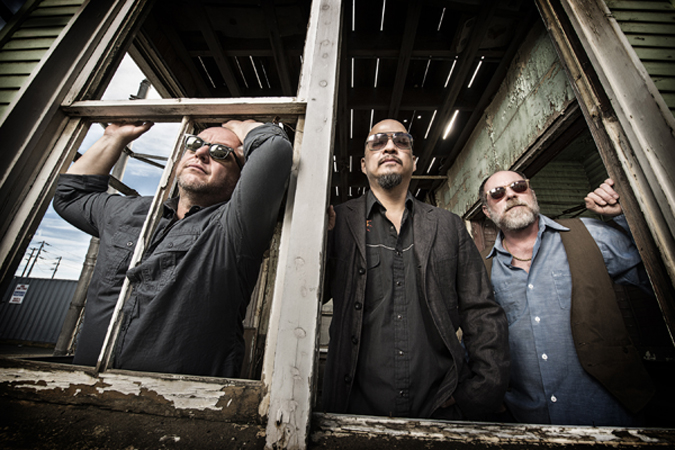 Pixies: Indie Cindy (PIAS, 4/29/14)
Pixies: Indie Cindy (PIAS, 4/29/14)
“Bagboy”
Twenty-three years after its last studio album—and almost a decade after reuniting—proto-alternative outfit Pixies has returned with Indie Cindy, a collection of tunes (without iconic bassist Kim Deal) that originally appeared as three separate EPs. On two separate phone calls from the road, guitarist Joey Santiago and drummer David Lovering spoke to Alarm about the need for new material, the “Pixification” process, and making the right mistake.
Generally, Charles [Thompson, front-man / bandleader, a.k.a. Black Francis] brings in the songs. How do you put your own stamp on them?
JS: Charles lets me do whatever comes up in my little noggin. After a while, we had a formula that worked. But there was an X factor. He doesn’t understand it, and I kind of don’t understand what the hell I’m doing either. I mean, I kind of do—I have little theories, but I also have no idea.
He would say “Pixify it,” and I know what he means. But it’s just the way that I play. It’s very natural to me, like the way that I walk. Back then, he would give me a chord progression, and I would record it over and over on a tape machine and work out a guitar part. But maybe the sound is just in my fingers or in my blood. Because no matter what kind of guitar I pick up—even a classical guitar—I always sound…pointy.
In the notes issued for the release of EP2, about the song “What Goes Boom” you say, “I like when the song changes and I don’t.” Can you talk about that?
JS: In the verses, the chords are moving around and I keep playing an arpeggiated E-minor. It’s a little “ha ha ha” trick I’ve used before, like on the B-side “Santo” [released with the 1991 single “Dig for Fire”]. I just kept playing these same three notes while the rest of the band was changing along. And on “Tame” [off 1989 sophomore album Doolittle], they’re all moving around hitting three chords, and as a joke I’m just crashing into one chord—that augmented fifth or seventh or whatever it is, the one that Hendrix plays on “Purple Haze.”
I’m just smashing that one chord over and over again. That’s my whole guitar part on that song. It might sound like noise, but you have to pick the right noise. You have to pick the right quote-unquote “wrong” thing. You’re trying to make the right mistake.

How important was it starting to get for the band to make new material?
DL: In 2004, the original idea was just to tour. It was only supposed to last for a year, but it just kept going and going. By the seven-year mark, it was like, “Okay, we’re doing this longer as a reunion than we were initially a band.” We knew we’d wear out our welcome if we didn’t make something new.
David, the press notes mention how you’re not comfortable recording. Why?
DL: All the times we’d been in the studio in the past, I had a very hard time. I never really liked it because I was put on the spot; the albums were happening quicker and quicker and quicker.
This one was different. We worked out all the songs, so I was very comfortable to begin with. But I can honestly say that the band’s been getting tighter and tighter and tighter on stage, so I’m even more comfortable now. And I’ve changed little things already. It’s still essentially the same parts as what I played on the recordings, but I feel more in tune with these new songs. I can put a little more subtlety into them.

